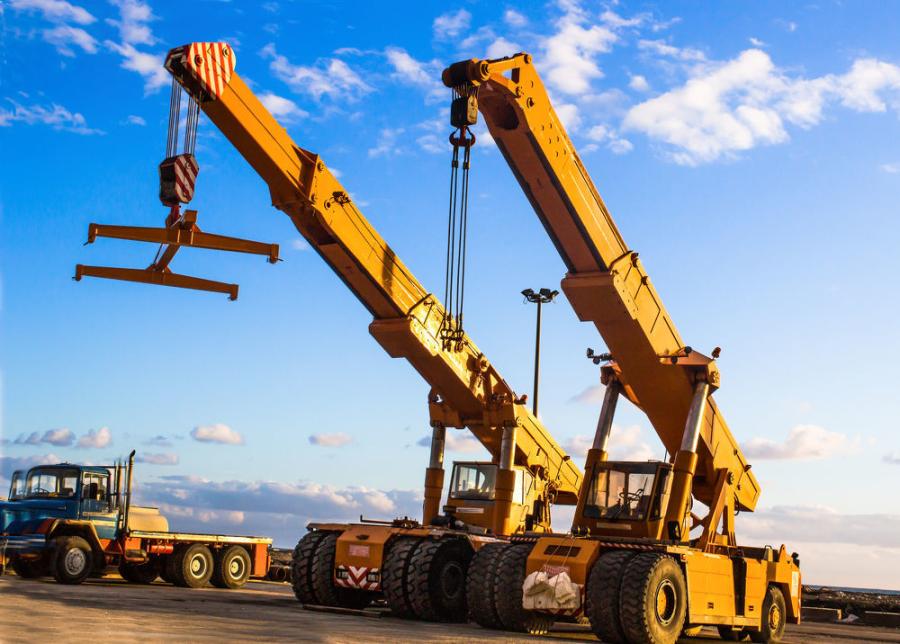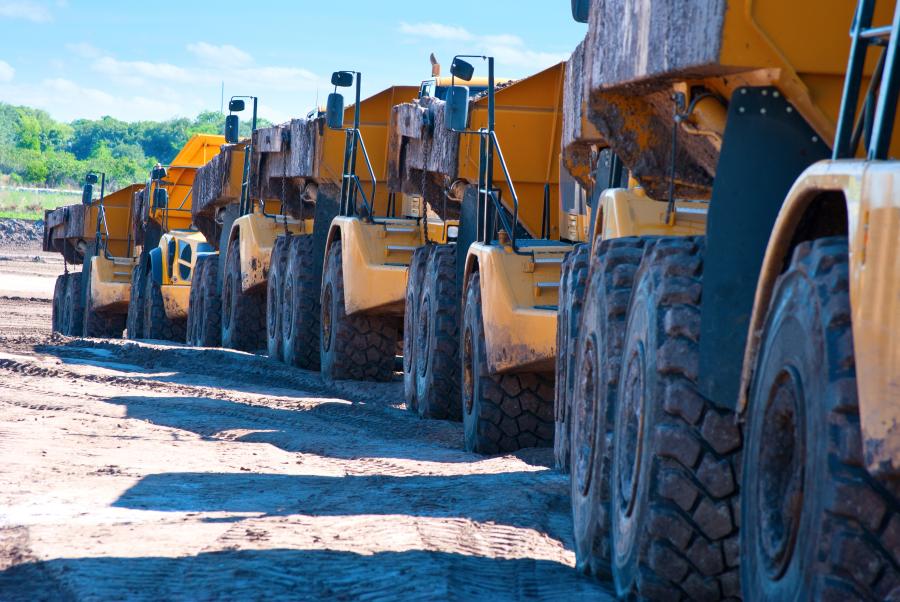Effectively plan jobsite travel patterns to reduce idling and minimize turns. Track the most efficient machine travel routes to and from the job site as well as on it.
Your business could benefit in a range of operational savings, including your fuel budget, if you can upgrade to newer-model machinery and trucks. One lifecycle analysis has shown tremendous per-truck savings just by upgrading to a 2021 model.
The Fleet Advantage Truck Lifecycle Data Index compares operating costs of older-model Class-8 trucks to 2021 model year replacements. The analysis shows that fleet operators can realize a first-year per-truck savings of $16,856 when upgrading from a 2016 model.
Fleets can save $5,084 per truck in fuel the first year following replacement, a 15 percent increase in fuel economy and reduction in carbon dioxide emissions.
But if you're looking for easier ways to improve your fuel costs both in the yard and on the construction site, and a fleet overhaul is not in your budget, there are changes you can make in your operational practices. Bring your drivers and mechanics onboard and you can smoothly roll out new fuel-saving practices.
Fueling Your Site
The list of equipment constantly running on a job site — trucks, cranes, heavy machinery, generators, compressors and hand tools — is a long one. A construction site is a busy, chaotic place.
In general, most equipment will need more fuel every three to four hours, according to Somerville, N.J.-based Taylor Oil. That is why fuel is one of the highest recurring costs on any job site.
Proper construction site planning is key to fuel efficiency. Henderson, Nev.-based Cat dealer Cashman Equipment suggests equipment owners and construction contractors "effectively plan jobsite travel patterns to reduce idling and minimize turns."
Your pre-planning should include a survey of the most efficient routes your machines should travel to and from the job site as well as the most practical method for navigating the job site.
You also should consider where you'll position heavy equipment and stage materials arriving at the construction site in order to avoid unnecessary travel. This includes anticipating any need to reposition heavy equipment.
"In some cases, this will be unavoidable, such as when new equipment needs to be called in upon completion of particular sections," wrote tech blogger James White.
"As long as other machines aren't impeding the way or have to navigate cramped areas due to space limitations, this is a problem that can be easily fixed with appropriate planning."
Machine idling can cost equipment owners big bucks. Cashman Equipment reports that depending on the application, idling can amount to 15 to 20 percent of total fuel used on a project.
Case dealer Trekker Group, Tampa, Fla., believes paying attention to idle reports from your telematics system and instructing crews to minimize idle time are key. "Establish an idle policy," the company urges.
White stressed idle times be limited prior to startup and shutdown. "The manufacturing processes that produce heavy machinery have been streamlined over the past few years," he blogged.
"New engines have become vastly more efficient than most previous models." This has affected the length of time it takes for engines to warm up and cool down. "This means that machines can be put to use and/or shut down almost immediately without repercussions," he wrote.
During startup and shutdown, many operators let their equipment idle for several minutes, a primary cause of fuel waste, believes fuel catalyst manufacturer Rentar, Boynton Beach, Fla.
In recent years, the engine mechanisms used in large equipment have advanced rapidly, allowing heavy machinery to warm up and cool down much faster, blogged the company.
As a result, it is no longer necessary to idle engines for long periods. Limiting idle times can help reduce fuel consumption and slash environmental pollution.
Keep your machines and vehicles well-maintained. Diligent maintenance not only saves fuel, but reduces repairs, improves reliability and minimizes exhaust emissions, according to Cashman Equipment.
Replace air filter, oil filters and change oil (using recommended oils) per manufacturer's recommendations. Blocked air filters can increase fuel consumption by 20 percent.
One stuck valve lifter can increase fuel usage by 10 to 15 percent. Improperly working thermostats have been noted to increase fuel consumption by 25 percent.
Throttle linkage needs to be kept properly adjusted. Other culprits affecting fuel economy include valve and ring wear, engine liming, water in fuel and external leakage, according to Cashman's blog.
Tire pressure is important, too. Maintain proper pressure to help optimize fuel efficiency, suggests the Trekker Group. Under-inflation by just 6 psi consumes 3 percent more fuel.
"Train machine operators to drive efficiently and avoid aggressive driving that increases fuel consumption."
The company also suggests equipment owners keep all heavy machines up-to-date on scheduled maintenance.
Sizing the machine for the job is key to fuel efficiency. As Cashman Equipment noted, too much or too little horsepower can drastically affect fuel efficiency.
Machines that are inadequate in size or capacity for an application don't operate at peak fuel efficiency, and machines that are overkill for the task are wasteful.
Select the gear that provides the desired ground speed at a reduced engine rpm without overloading. White wrote that aside from keeping machines at peak performance-level, thought should be given to the way changes in gear affect fuel consumption.
"By simply reducing engine rpm without overloading at ground speed, fuel efficiency can be increased by 15 to 30 percent at half power and 5 to 15 percent at 75 percent power."
Use heavy equipment with an advanced telematics system. Telematics will allow you to monitor fuel consumption, operational hours, driving habits, machine idling, maintenance alerts and other factors that affect overall fuel usage and costs, wrote Trekker Group.
"Monitor fuel use closely with the telematics system to identify high and excessive consumption. Check out the state of these machines, how they're being operated, and whether they're the right equipment for their applications."
Your Fuel Provider
In the site planning stage, you should determine your fuel needs for the construction project and the site. Taylor Oil suggests determining whether you'll need onsite fueling for individual pieces of equipment, or a delivered fuel tank and pumps.
If you go the delivered route, make sure you also have special protection shields that guard against theft and damage.
"Depending on the choice you go with, you can enjoy a more flexible fueling structure," according to the Taylor Oil blog.
Find a trusted onsite fuel delivery provider. "Not only can you cut down on wasted down time, you can also enjoy 24/7 flexibility from a provider that delivers day or night, or even on weekends," noted the blog.
"The best part is, the fueling tanks can service more than one truck or piece of machinery at once."
Sometimes your construction site contains both standard gasoline and off-road diesel, in the case of heavy equipment.
Look for patterns in fuel use on the construction site. Some fuel providers have sophisticated tank monitoring systems that use automatic tank gauges that notify you when you're approaching low levels of fuel.
Taylor noted a reputable fuel provider may also offer you daily or weekly reports that track your accounting practices and fuel data management methods.
It's important to always follow the recommended fuel grade for the equipment and the weather conditions in which the machinery will be working.
Fuel storage also is important to fuel efficiency on the job site. Cashman Equipment stresses the goal here is to minimize evaporation. You can do that by keeping storage tanks well-shaded. "Less evaporation occurs with white or aluminum painted storage tanks versus red," noted Cashman's blog.
Do you have a construction refueling plan? Emergencies happen, especially during the winter, points out Taylor Oil. Proper refueling practices help you smoothly handle your fueling needs without stress.
"Failing to have a re-fueling plan for your construction equipment can affect the timely completion of projects. Partnering with a responsive fuel provider can make all the difference in developing a strategy to put continuity of equipment-based operations at the forefront."
Taylor suggested finding a reliable service provider who offers a variety of fuel services, including customizable scheduling capabilities, to ensure you get 24/7 support when you need it most.
"Having someone on your side to provide fueling throughout the day, night or weekend will not only cut down on the risk of delays but failures, as well. You benefit from a stronger reputation in the marketplace, translating to additional opportunities for contracts and revenues."
Your refueling plan should take into account project duration, location, frequency of fill-ups, equipment size, type of project, OSHA regulations, history of fuel consumption, jobsite requirements, onsite or mobile fueling, volume pricing, labor costs and liability.
"Once you have a plan in place, get it in writing and post it. Review often and adjust as needed," suggested Taylor. CEG
Lucy Perry
Lucy Perry has 30 years of experience covering the U.S. construction industry. She has served as Editor of paving and lifting magazines, and has created content for many national and international construction trade publications. A native of Baton Rouge, Louisiana, she has a Journalism degree from Louisiana State University, and is an avid fan of all LSU sports. She resides in Kansas City, Missouri, with her husband, who has turned her into a major fan of the NFL Kansas City Chiefs. When she's not chasing after Lucy, their dachshund, Lucy likes to create mixed-media art.
Read more from Lucy Perry here.
Today's top stories















